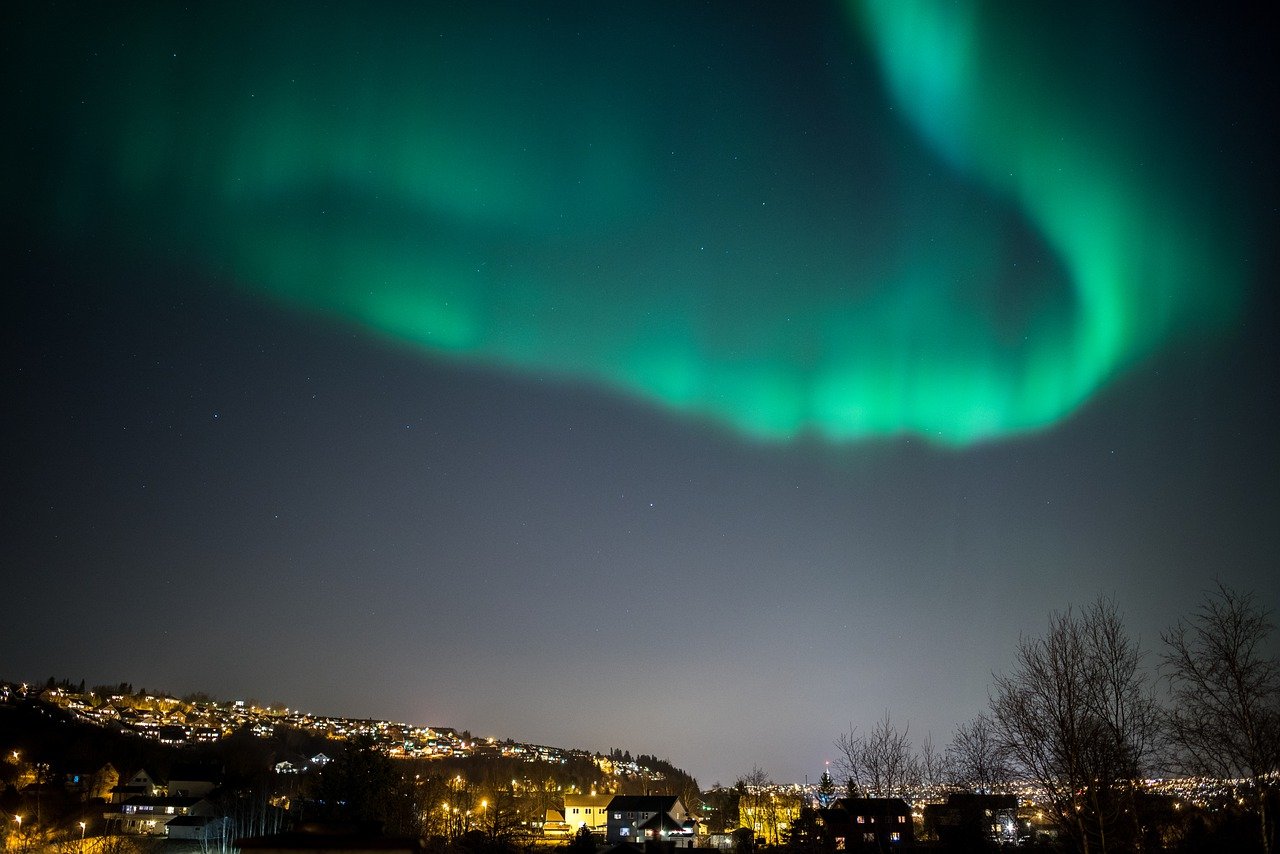At the weekend, people in many atypical regions of the world had the opportunity to marvel at auroras in the sky. A massive solar storm ensured the phenomenon could also be seen from Austria on Saturday night—and even partially on Sunday night. In the meantime, the disturbance in the Earth’s magnetic field has weakened considerably. It was ‘too little to see anything in Austria’, Tanja Amerstorfer from Geosphere Austria told APA.
‘There are still solar storms on the way,’ emphasised the deputy head of the Space Weather Office of Geosphere Austria (formerly the Central Institute for Meteorology and Geodynamics, ZAMG). These started on Saturday, but it is questionable whether they will hit the Earth; ‘if then only at the edge’, said the physicist on Sunday afternoon. There is an increased probability that solar storms will occur again in a few weeks or months. The solar activity cycle is currently at its maximum, which is the case every eleven years.
The special thing about the situation over the weekend was that several solar storms started simultaneously from the sun. When they interact, the geomagnetic response is greater,‘ said Amerstorfer, explaining the visibility of the northern lights (’Aurora Borealis”) as far as Austria. The southern orientation of the magnetic field in these solar storms also contributed to this.
‘Most observers in Austria have never seen such spectacular northern lights before,’ emphasised Michael Jäger, Chairman of the Martinsberg Astronomical Centre in Lower Austria, on Saturday. The solar storm created a colourful night sky until well after midnight. On Sunday night, the weakened auroras were easier to see thanks to greater visibility and less light pollution in the mountain regions.
The first ‘extreme’ solar storm in 20 years caused impressive auroras in the sky in many parts of the world. The phenomenon reached Earth on Friday afternoon and continued in varying degrees of intensity over the weekend, according to the US National Oceanic and Atmospheric Administration’s (NOAA) Space Weather Prediction Center.
Internet users in many countries posted photos of the colourfully illuminated night sky. In America, the phenomenon, usually only seen at the poles, could be marvelled at in the USA, Chile and Argentina, among others. Enthusiastic users in Australia and New Zealand also published photos.
Solar storms are ‘explosions of energetic particles and magnetic fields emanating from the sun’, explained by Shawn Dahl from the US Space Weather Prediction Centre (SWPC), affiliated with the NOAA. According to NOAA experts, the region of origin of the solar storms is a large, complex sunspot cluster that is about 17 times the diameter of Earth.
The solar storm was categorised as ‘extreme’ on Friday – according to NOAA, the last time this category was reached was in October 2003 during the so-called Halloween storms. At that time, there were power outages in Sweden, and transformers were damaged in South Africa.
The NOAA announced that GPS, power grids, spacecraft, satellite navigation and other technologies could also be affected by the current solar storm. On Saturday, it spoke of ‘reports of irregularities in the power grid and interference with radio frequency communications and GPS’.
Due to possible disruptions caused by changes in the earth’s magnetic field, authorities recommended that satellite and power operators and airlines take precautionary measures. The SWPC in the USA advised citizens to take the precaution of not using batteries or generators. However, the experts pointed out that the solar storm could particularly affect high-voltage power lines. Elon Musk, whose Starlink network operates around 5,000 satellites in low Earth orbit, said on X that the satellites were under great pressure but had so far withstood the storm.
The strongest geomagnetic storm measured to date was recorded in 1859 and went down in history as the Carrington Event, named after the British astronomer Richard Carrington. It caused major disruption to the telegraph-based communications network, set telegraphs on fire and gave workers electric shocks.
- source: k.at/picture: Bild von Bjørnar Kibsgaard auf Pixabay
This post has already been read 2511 times!



